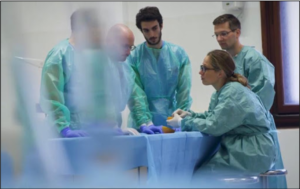FNFT: FASCIA and the OROFACIAL COMPLEX.
Fascia is a trendy word these days. The relationship between fascia, posture and common orofacial conditions such as ankyloglossia and TMD is often espoused but what is fact and what is false?
If you are a practitioner who wants your clinical practice to be evidence informed rather than based on pseudo-science then this workshop is a MUST!
What you receive
Investment: $139.00 USD

What you'll learn from this course
Fascial anatomy
Fascia is a trendy word these days but there are many myths and misunderstandings about the role fascia plays in dysfunction. This workshop will provide the thinking therapist with a rigorous understanding of the anatomical, mechanical and autonomic attributes of fascia.
Fascia, ankyloglossia, TMD and more...
Fascial restrictions can contribute several common orofacial presentations. As a therapist that is presented with conditions such as ankyloglossia and TMD you must understand the mechanical and autonomic symptoms that can be attributed to fascial dysfunction. These symptoms are regularly attributed to the wrong etiology and subsequently mismanaged clinically. Make sure you know what to look for and which questions to ask!
Fascia, posture and pain.
Fascia cannot be 'lengthened'! This is just one of the concepts that is frequently misunderstood. As a therapist you must understand that fascia can contribute to force transmission in movement precisely because it cannot lengthen. Restrictions in fascia typically do not CAUSE pain but restrictions cause compensatory movement patterns causing OTHER structures to become painful. This subtle distinction has big clinical implications. Understand it well and you will help more patients.
Watch a preview
Ready to get started?
Please note that your personal access code will be sent to your designated email address
Disclaimer: Please ensure you work within your professional scope of practice when applying these gentle FNFT release techniques to patients in your own State or Territory
